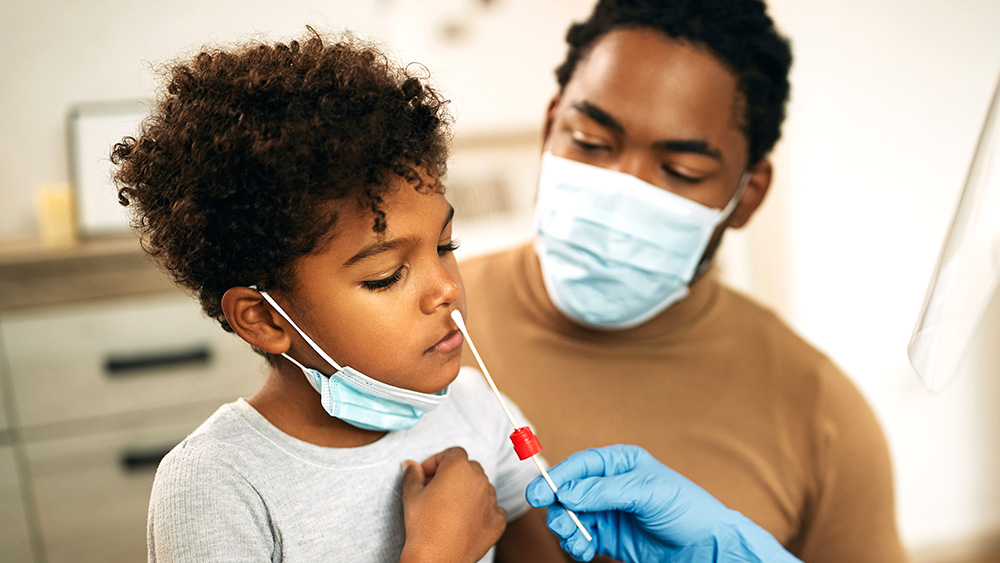
Researchers supported by NIH have found that, with proper instruction, children are as capable of correctly swabbing their noses as adults are.

Researchers supported by NIH have found that, with proper instruction, children are as capable of correctly swabbing their noses as adults are.
What you need to know
For most people, finding out whether they have COVID-19 involves using a nasal swab to collect a test sample. Generally, adults can collect their own samples, a practice called “self-swabbing.” But for children, COVID-19 testing isn’t as simple. Although older kids may be able to follow the testing instructions, younger children may have more difficulty, and the results may be inaccurate. Because of this, adults have had to administer tests to younger school-age children — something that takes time and resources that could be used elsewhere.
Researchers supported by the National Institute of Biomedical Imaging and Bioengineering and the National Center for Advancing Translational Sciences have found that, with proper instruction, children and adolescents can collect their own nasal swabs without it resulting in less accurate test results.
What did the researchers do?
In July and August 2021, researchers enrolled 197 kids age 4 to 14 who had symptoms of COVID-19 and lived in the Atlanta area. Before self-swabbing, the children watched a short video on how to correctly swab their noses. The samples were tested for COVID-19, and the results of the tests where swabs were conducted by the children were compared with the results of tests conducted by the health care workers.
The researchers found that the two sets of tests had the same result about 98% of the time. Both forms of collection correctly identified the children who had COVID-19.
The findings show that, with instruction, children and adolescents can use a nasal swab to collect their own samples for COVID-19 testing.
Why is this research important?
Schools, after-school programs, and other group settings may need to test children for COVID-19 often to help prevent spread of the disease. But they may not have enough health care workers or other qualified adults to collect the samples to test. If children can self-swab as accurately as adults — as this study suggests — that could make it easier for organizations to keep children safe.
Where can I go to learn more?
NIH-Funded Pediatric COVID-19 Testing Study Finds School-Aged Children Can Self-Swab
-
NIH shares research on COVID-19 testing in children.
COVID-19 Testing: What You Need to Know
-
The Centers for Disease Control and Prevention (CDC) provides information on when and how to test for COVID-19.
-
CDC also provides guidance to help schools and early care and education programs keep students safe, including guidance on when to test for COVID-19.
Sources
Waggoner, J. J., Vos, M. B., Tyburski, E. A., Nguyen, P.-V., Ingersoll, J. M., Miller, C., Sullivan, J., Griffiths, M., Stone, C., Benoit, M., Benedit, L., Seitter, B., Jerris, R., Levy, J. M., Kraft, C. S., Farmer, S., Peagler, A., Wood, A., Westbrook, A. L., … Lam, W. A. (2021). Concordance of SARS-CoV-2 results in self-collected nasal swabs vs swabs collected by health care workers in children and adolescents. JAMA, 2022;328(10):935-940. https://doi.org/10.1001/jama.2022.14877

News and Stories
Read stories about the efforts underway to prevent, detect, and treat COVID-19 and its effects on our health.
 An official website of the United States government
An official website of the United States government

